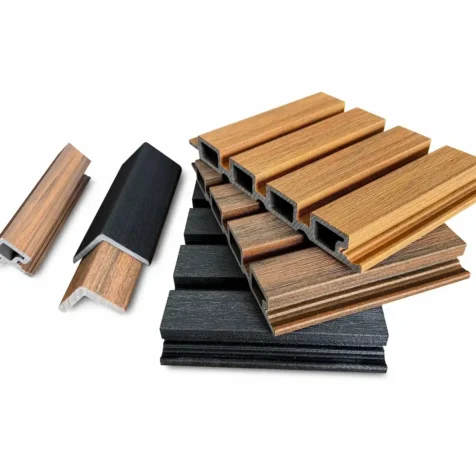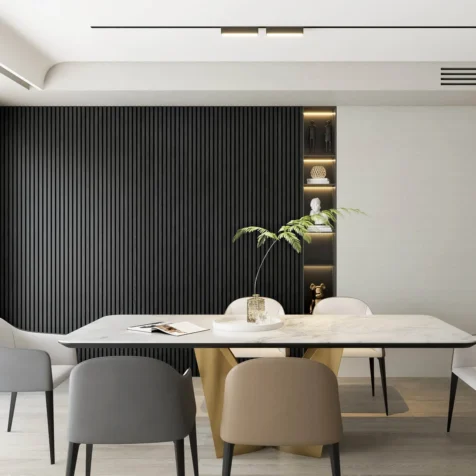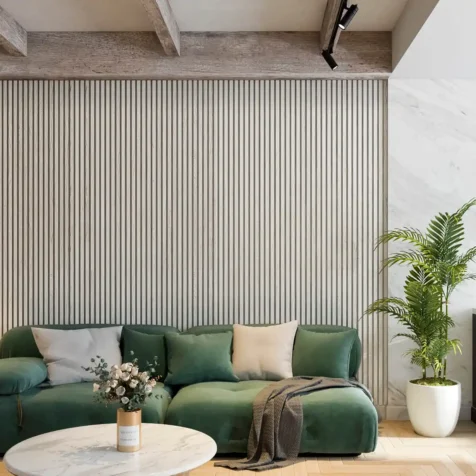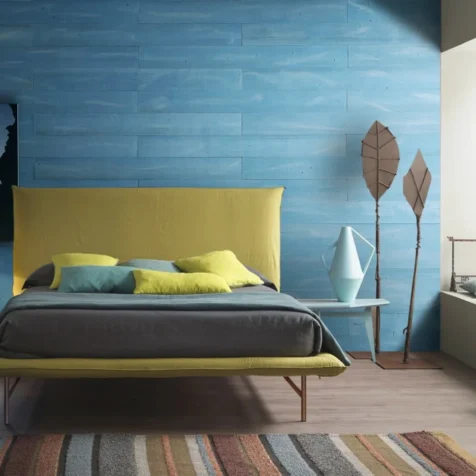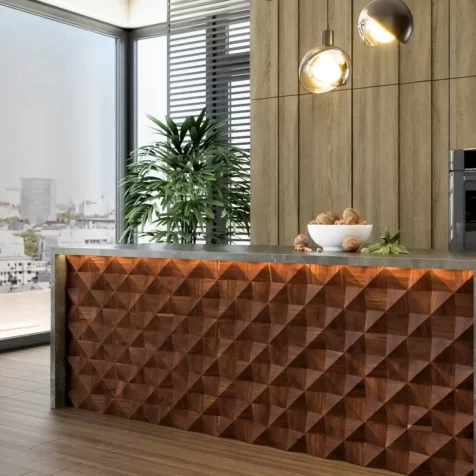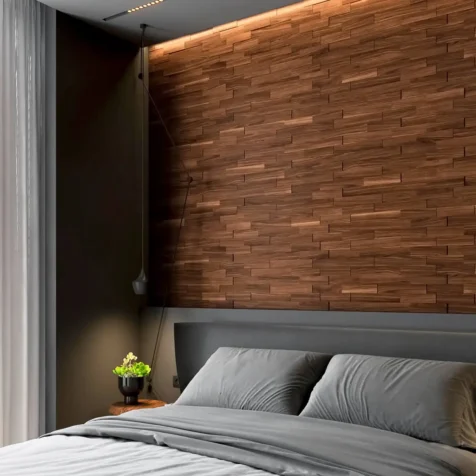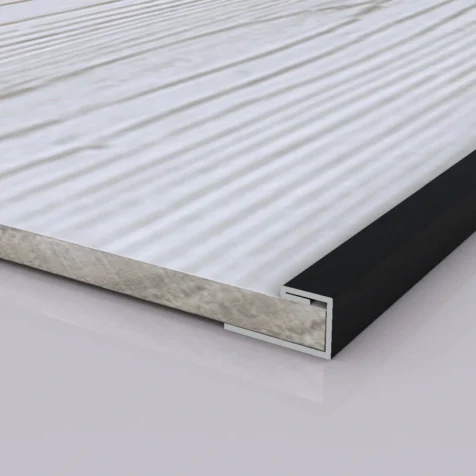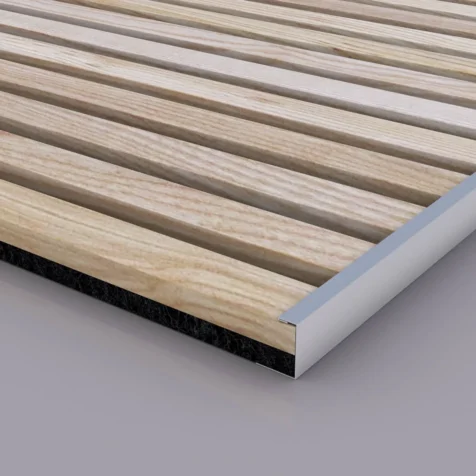What Are the Differences Between Wainscoting vs Paneling?
Decorating your home’s walls can significantly impact your living space’s overall aesthetic and functionality. Two popular wall treatments are wainscoting vs paneling. While these terms are often used interchangeably, they have distinct characteristics and applications.
In the 16th century, wainscoting was initially used as a practical solution to protect the lower portions of walls from damage caused by chairs and other furniture. Meanwhile, paneling originated in the medieval period and was used to insulate and protect entire walls. So, what are the exact differences between wainscoting vs paneling? This comprehensive article will delve into the key differences to help you decide on your next home renovation or design project.
Understanding Wainscoting
Before we dive into the differences between wainscoting and paneling, let’s start with the basics of wainscoting.

What is Wainscoting?
Wainscoting is a type of decorative paneling that covers the bottom half or three-quarters of a wall and typically includes molding at the top. It creates a visually appealing separation between the lower and upper portions of the wall.
Types of Wainscoting
Wainscoting comes in various styles, each offering a unique look and feel. Some of the most common types include:
- Beadboard: This type features vertical planks with a distinctive beaded design, creating a classic and timeless look.
- Raised Panel: Raised panel wainscoting features a series of raised panels surrounded by decorative moldings, lending a formal and traditional aesthetic.
- Flat Panel: As the name suggests, flat panel wainscoting features smooth, flat panels, providing a more modern and minimalistic appearance.
- Board and Batten: This style consists of wide, vertical boards separated by narrow strips of wood, known as battens, creating a rustic and farmhouse-inspired look.
Materials Used in Wainscoting
Wainscoting can be crafted from a variety of materials, including:
- Wood: Traditional wood options like oak, maple, and pine are popular choices for their natural beauty and durability.
- MDF (Medium-Density Fiberboard): MDF is a cost-effective and stable alternative to solid wood, often used in modern wainscoting applications.
- PVC: PVC (polyvinyl chloride) wainscoting is a moisture-resistant and low-maintenance option, making it suitable for bathrooms and other humid environments.
- Other Materials: Depending on the desired look and budget, wainscoting can also be made from materials like laminate, tiles, or even wallpaper.
Installation
Wainscoting is a type of decorative paneling that is typically installed at chair rail height in a room, running around the entire perimeter. It is often assembled using beadboard panels and is topped with a thin strip of chair rail for a visually pleasing finish.
Pros and Cons
Adding wainscoting to your home has many advantages. Even if you have a small space, don’t think it won’t work for you. Some benefits include:
- They protect your walls or hide damaged walls, so you don’t have to worry about cracks from children or pets.
- Provide a cozier and more intimate home experience.
- Timeless design choice, unlikely to go out of fashion.
- Easily remove the panels before selling your home, or the buyer can remove them after they move in.
- The risks are low. You’re not causing permanent damage to your walls, and the panels can be easily removed if you want to change.
Although wainscoting has many benefits, it also has some downsides. The negative effects can vary depending on your chosen panels and your home. A few include:
- Easily get damaged by kids, pets, or other causes, just like regular walls.
- Many panels are made of wood and need special care to prevent warping or becoming brittle over time.
- You likely won’t be able to remove the panels to paint the entire wall, so the bottom half will be a different color when you want to repaint the room.
- Poorly-designed and installed panels can make the room feel small and cramped. So this is not ideal for homeowners looking to sell their homes.
Understanding Paneling
Understanding what paneling is can help you better differentiate between wainscoting vs paneling. Paneling offers a distinct approach to wall coverings, providing a seamless and cohesive look throughout a space.

What is Paneling?
Paneling is a wall covering system that involves installing panels made of various materials across the entire wall or ceiling surface that create a continuous and seamless appearance.
Types of Paneling
Paneling comes in numerous styles and designs, including:
- Wood Paneling: Classic wood paneling options like oak, pine, and cedar offer a warm and natural aesthetic.
- MDF Paneling: MDF (Medium-Density Fiberboard) paneling is a cost-effective and versatile alternative to solid wood.
- PVC Paneling: PVC (polyvinyl chloride) paneling is moisture-resistant and low-maintenance, making it ideal for bathrooms and other damp areas.
- Tileboard Paneling: Tileboard paneling features a tiled design and is often used in basements or utility rooms for its durability and ease of maintenance.
Materials Used in Paneling
Similar to wainscoting, paneling can be made from a variety of materials, such as:
- Wood: Solid wood paneling provides a warm and natural look, and options like oak, pine, and cedar are popular.
- MDF: As mentioned before, people use this cost-effective and stable material instead of solid wood paneling.
- PVC: PVC (polyvinyl chloride) paneling is a moisture-resistant, low-maintenance option suitable for bathrooms and other humid environments.
- Tileboard: Tileboard is a durable and easy-to-clean material often used in basements or utility rooms.
Installation
Paneling is typically installed directly onto the wall studs or an existing wall surface, covering the entire wall from floor to ceiling or a desired height.
Pros and Cons
Pros:
- Creates a cohesive and seamless look across walls or ceilings
- Available in a wide range of materials and styles
- Can add insulation and improve acoustics
- Easy to clean and maintain
Cons:
- May feel less dimensional and visually interesting than wainscoting
- It can be challenging to install, especially for inexperienced DIYers
- Removing paneling for future updates can be labor-intensive
Summarizing The Similarities and Differences of Wainscoting vs Paneling
While wainscoting and paneling share some similarities, they have distinct differences that set them apart. The following table summarizes the key aspects that differentiate wainscoting vs paneling:
| Aspect | Wainscoting | Paneling |
|---|---|---|
| Coverage Area | Covers the lower half or three-quarters of a wall | Covers the entire wall or ceiling |
| Design and Style | Offers a variety of styles, from traditional to modern | Available in various styles, it often creates a more uniform look |
| Materials | Commonly made from wood, MDF, PVC, and other materials | Similar material options to wainscoting include wood, MDF, PVC, and tileboard |
| Height | Typically installed at chair rail height | Can cover walls from floor to ceiling or a desired height |
| Installation | Often assembled from panels with a chair rail cap | Installed directly onto the wall studs or the existing surface |
| Cutting | May require intricate cuts for corners and openings | Cutting may be more straightforward for a seamless installation |
| Purpose | Adds visual interest, protection, and perceived value | Creates a cohesive look, improves insulation, and acoustics |
| Location | Commonly used in living rooms, dining rooms, and entryways | Suitable for various rooms, including basements and utility spaces |
Choosing The Right Wall Covering For Your Home
So that’s everything about the differences between wainscoting vs paneling. When deciding on the best wall covering for your home, it’s crucial to consider your personal style, desired functionality, and the overall aesthetic you want to achieve. Wainscoting adds a warm and traditional touch, while paneling offers a more modern and seamless look. Your decision should be guided by the room’s purpose, available space, and budget.
For those aiming to add sophistication and charm to their walls, Woody Wall’s products offer a range of high-quality wainscoting and paneling options to upgrade your home decor. Besides, our Metal Edge Trims can help to create wainscoting or paneling with ease, adding a professional and polished finish to your project
Whether you choose the timeless elegance of wainscoting or the seamless paneling look, Woody Wall’s products can help you achieve the perfect wall covering for your space.
FAQs
Let’s answer some questions about the differences between wainscoting vs paneling.
Which is more expensive, wainscoting or paneling?
The cost of wainscoting compared to paneling can vary depending on the materials used, how intricate the design is, and the size of the project. Wainscoting may be more expensive because of its detailed design and the need for extra trim pieces. However, you can decrease your expenses using our Metal Edge Trims, which perfectly fit our wood panels. On the other hand, the price of panels depends on the chosen material, with wood paneling usually being more expensive than MDF or PVC options.
Can I install wainscoting or paneling myself?
If you have some carpentry skills and experience, you can install it yourself. However, due to its detailed cuts and trim work, wainscoting may need more precision and expertise, while panelling can be relatively easy to install.
How do I maintain wainscoting and paneling?
It is important to clean wainscoting and paneling regularly to keep them looking their best. You can dust or wipe down the surfaces with a damp cloth to remove dirt and grime. If there are tougher stains, you can use mild soap and water to clean them. Avoid using strong chemicals or abrasive cleaners, as they can harm the finish of the wainscoting or paneling.
Are there eco-friendly options for wainscoting and paneling?
Yes, there are eco-friendly options available for both wainscoting and paneling. You can use eco-friendly materials such as reclaimed wood, bamboo, or recycled MDF to create sustainable wall coverings. Choosing water-based finishes and adhesives can further increase the environmental friendliness of wainscoting vs paneling installations.
Can wainscoting or paneling increase the value of my home?
Both can make your home look better and more valuable. They add character, depth, and visual interest to interior spaces. Well-kept wainscoting or paneling can also make your property seem more luxurious and well-made, potentially increasing its overall value.






